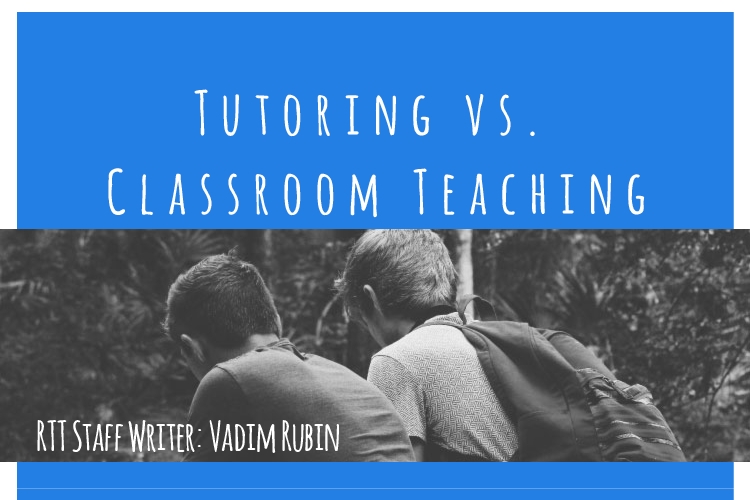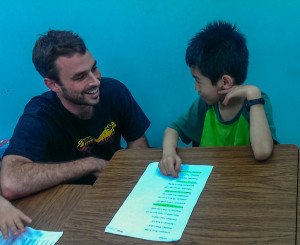Tutoring vs. Classroom Teaching

Coming to Asia is a great opportunity to improve oneself as a teacher. The demand for language teachers, not just English, is quite high, which means, more job opportunities for speakers of foreign languages.
These opportunities come in a few forms: cram schools, public schools, private kindergartens, tutoring, and language exchange. Within those are also a variety of types; however, that’s a story for another time. (Please note that tutoring comes with its own risks. It is illegal to tutor in Taiwan without a work permit. Many teachers choose to do this on their own because tutors are needed in Taiwan, but they do so at their own risk. Reach To Teach does not assist teachers with finding tutoring work. That said, many schools have contracts with places of business and can offer their teachers additional tutoring work that is legal and established.)
After teaching and tutoring in Taiwan for about two years I’ve had a lot of people have asked me about how I enjoy tutoring compared to teaching at a school. There are a lot of pros and, of course, a few cons that come with each so the conversation ends up lasting quite a while. So, instead of reciting the reasons I enjoy teaching 1-on-1 and teaching at schools, I figured I would write them down and pass on my experience so that it might help others.
Classroom Management
The way you teach a 1-on-1 or 1-on-2 type of class will differ greatly from a classroom setting. Also, the way you speak to each student will also vary.
For starters, in the classroom you usually have 10+ students to look after, so classroom management plays an important role. On the other hand, tutoring doesn’t require much classroom management because, well, 1) you’re probably not even in a classroom and 2) the students are more willing to listen when only confronted with a teacher.
Depending on your teaching style, and classroom management abilities, you may or may not like either or. Personally, I enjoy classroom management – there’s something about figuring out the needs of a student in order to bring out their best ability that really fascinates me. Of course, sitting with a student 1-on-1 can be more relaxing and less stressful.
Building Relationships
One of my favorite parts about teaching is getting to interact and make connections with your students. In the classroom you can meet many people at one time.
With tutoring you meet less students, but you talk to them personally.
In the classroom there are too many kids to build a deep relationship with all of them. It’s important as a teacher to get to know your students, know their strengths and weaknesses, what they enjoy to do, and how they learn best (visual, audio, kinesthetic learner etc.) and there will end up being students you become closer with, but, in general, it’s difficult to dedicate a lot of time to every student.
With tutoring, getting to know your students is basically your job. You meet the parents, talk with the students about their day, what they like to do, how they feel about certain topics, and overall, spend a lot more time talking to them.
Schedule
If you work in a school your schedule will be based on that schools working hours. While most schools will work with you to determine when you can/need to teach, there will not be that much flexibility in your hours. Days off will also be determined by school holidays and number of teachers who can help you substitute. Typically, you won’t have days off at a school unless you request a few weeks in advance and teachers have been prepared to cover your classes.
Tutoring offers a much larger flexibility for teaching hours; however, the times need to be okay with both the teacher and students. Sometimes, dealing with the scheduling of hours can be time consuming and difficult. It’s not always easy to coordinate a suitable time for both parties. This is one of the biggest difficulties I have found with tutoring, especially if you are coordinating with more than one student. Also, scheduling will often go through the parents if you are teaching younger students.
So, while there is a lot flexibility with a tutoring schedule, there also comes more responsibility. Also keep in mind, canceling classes will also make students more wary of continuing classes.
Lesson Planning
Many schools have curriculums and teaching materials already prepared and readily available. While you will still need to review the curriculum and find teaching materials in order to make a lesson plan, you will at least have a general outline of what the students need to learn.
Tutoring requires you to start from scratch with a student. The best way to create your lesson plan and curriculum, if you will, is to have a few introductory classes to determine a student’s language ability. Once you have a grasp on what the student needs to work on you can start finding materials that are appropriate for their level.
Give some homework after every class that builds off of each other. If the students are dedicated to improving their language abilities, they will continually complete homework and classes will begin to get smoother.
It’s also important to keep a goal in mind when tutoring a student. In the classroom your curriculum will help you set the goals you want to achieve for the class as a whole. In tutoring you need to determine for yourself a realistic goal that student(s) can reach after a certain amount of time or certain number of lessons.






